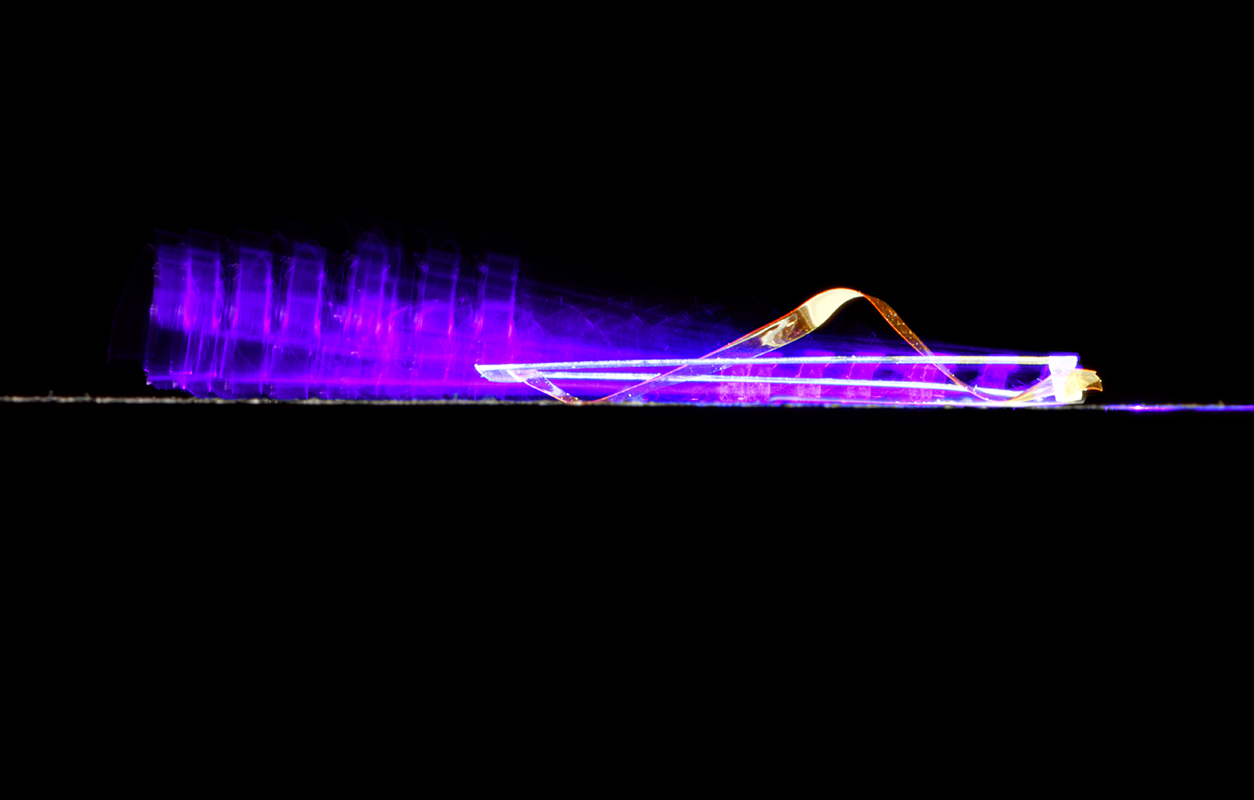Light Makes New Material Creep Like a Caterpillar
Scientists developed the light-sensitive substance and coaxed a small strip of it to "walk" by exposing it to a fixed light source.
The spotlight made one side of the paper-clip-sized material contract while the other side expanded, producing an undulating movement that carried it forward, the researchers reported in a recent study. [Science Fact or Fiction? The Plausibility of 10 Sci-Fi Concepts]
The secret to this groundbreaking light-activated locomotion lies in the liquid crystal network (LCN) in the polymer. LCNs are known for their ability to deform materials when exposed to light, but prior studies had only examined their ability to warp materials, not move them forward or backward, the scientists wrote in the study.
To determine whether bending could become walking, researchers tweaked chemical components in their polymer's LCN to make it relax more quickly after contracting, which would translate into a smoother, more wavelike motion in the polymer.
Then, as the polymer strip deformed, the shadows it threw over itself created a feedback loop in the wave — contracting and expanding repeatedly, as the light intensity changed — which made the polymer "walk," the study authors reported.
To further test their tiny walker, the researchers placed sand grains on the material, which it successfully transported through its wavelike movements — and it was able to do this over and over again, the scientists wrote.

They also observed that it could push another small object uphill — even one that was up to 30 times its own weight, study co-author Anne Hélène Gélébart, a doctoral candidate at Eindhoven University of Technology in the Netherlands, told Live Science in an email.
Sign up for the Live Science daily newsletter now
Get the world’s most fascinating discoveries delivered straight to your inbox.
And when they attached a small strip of the polymer to a rectangular plastic frame, the polymer's motion carried the frame forward as well, the study authors reported.
"We have studied how the angle of light influences the response, and basically it can keep moving forward for a wide range of angles," Gélébart explained.
"So as long as the terrain is not too steep — so that light can always reach the material under an angle — it will keep going. Therefore, we expect the device to perform well on bumpy surfaces," she said.
The movement isn't very fast — only about 0.2 inches (0.5 centimeters) per second, according to the study. But the versatility of this material could enable it to apply light-driven locomotion toward a variety of tasks, such as cleaning delicate solar cells or carrying small loads through hard-to-access places, the study authors wrote.
"The next steps would be to integrate them in larger devices," Gélébart said.
The findings were published online June 28 in the journal Nature.
Original article on Live Science.

Mindy Weisberger is an editor at Scholastic and a former Live Science channel editor and senior writer. She has reported on general science, covering climate change, paleontology, biology and space. Mindy studied film at Columbia University; prior to Live Science she produced, wrote and directed media for the American Museum of Natural History in New York City. Her videos about dinosaurs, astrophysics, biodiversity and evolution appear in museums and science centers worldwide, earning awards such as the CINE Golden Eagle and the Communicator Award of Excellence. Her writing has also appeared in Scientific American, The Washington Post and How It Works Magazine. Her book "Rise of the Zombie Bugs: The Surprising Science of Parasitic Mind Control" will be published in spring 2025 by Johns Hopkins University Press.










